
Bloomsbury is a district in the West End of London. It is considered a fashionable residential area, and is the location of numerous cultural, intellectual, and educational institutions.
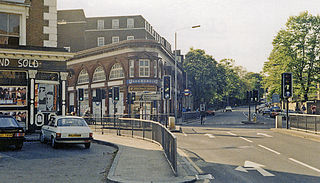
Chalk Farm is a small urban district of north London, lying immediately north of Camden Town, in the London Borough of Camden.

Highgate is a suburban area of north London at the northeastern corner of Hampstead Heath, 4+1⁄2 miles north-northwest of Charing Cross.
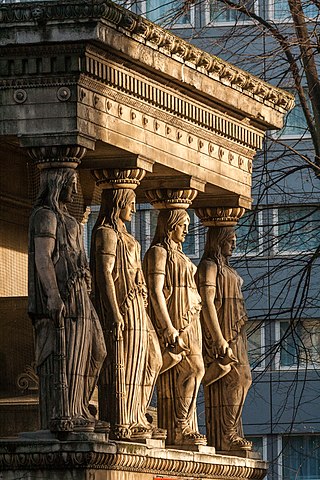
St Pancras is a district in north London. It was originally a medieval ancient parish and subsequently became a metropolitan borough. The metropolitan borough then merged with neighbouring boroughs and the area it covered now forms around half of the modern London Borough of Camden. The area of the parish and borough includes the sub-districts of Camden Town, Kentish Town, Gospel Oak, Somers Town, King's Cross, Chalk Farm, Dartmouth Park, the core area of Fitzrovia and a part of Highgate.

Kings Cross is a district on either side of Euston Road, in north London, England, 1.5 miles (2.4 km) north of Charing Cross. It is bordered by Barnsbury to the north, Clerkenwell and Islington to the east, Holborn to the south and Euston to the west. It is served by two major rail termini, St Pancras and King's Cross. King's Cross station is the terminus of one of the major rail routes between London and the North.

Tottenham Court Road is a major road in Central London, almost entirely within the London Borough of Camden.
Somers Town is an inner-city district in North West London. It has been strongly influenced by the three mainline north London railway termini: Euston (1838), St Pancras (1868) and King's Cross (1852), together with the Midland Railway Somers Town Goods Depot (1887) next to St Pancras, where the British Library now stands.

Goodge Street is a London Underground station on Tottenham Court Road in Fitzrovia, in the London Borough of Camden. It is on the Northern line's Charing Cross branch between Warren Street and Tottenham Court Road stations, and is in Travelcard Zone 1.

Fitzrovia is a district of central London, England, near the West End. The eastern part of area is in the London Borough of Camden, and the western in the City of Westminster. It has its roots in the Manor of Tottenham Court, and was urbanised in the 18th century. Its name was coined in the late 1930s by Tom Driberg.

Fitzroy Square is a Georgian square in London. It is the only one in the central London area known as Fitzrovia. The square is one of the area's main features, this once led to the surrounding district to be known as Fitzroy Square or Fitzroy Town and latterly as Fitzrovia, though the nearby Fitzroy Tavern is thought to have had as much influence on the name as Fitzroy Square.

St George's Cathedral is an Antiochian Orthodox church in Albany Street, St Pancras, in the London Borough of Camden. Built to the designs of James Pennethorne, it was consecrated as an Anglican place of worship called Christ Church in 1837. It became an Orthodox cathedral in 1989.
Derwent London is a British-based property investment and development business. It is headquartered in London and is a constituent of the FTSE 250 Index.
West End is a ward of the London borough of the City of Westminster, in the United Kingdom. The ward has existed since elections to Westminster City Council that took place on 4 May 1978. It is named after the West End of London, which covers a wider area. While it has a resident population of about 7,000, its daytime population is around 250,000 due to the high number of businesses in the area.

Bloomsbury is a ward in the London Borough of Camden, in the United Kingdom. It covers much of the historic area of Bloomsbury, and also some of Covent Garden and Fitzrovia.
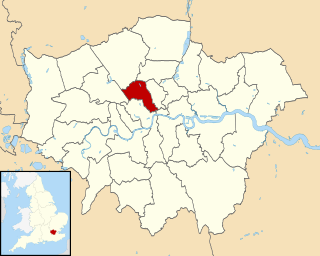
The London Borough of Camden is a London borough in Inner London. Camden Town Hall, on Euston Road, lies 1.4 mi (2.3 km) north of Charing Cross. The borough was established on 1 April 1965 from the area of the former boroughs of Hampstead, Holborn, and St Pancras—which together, prior to that date, had comprised part of the historic County of London.
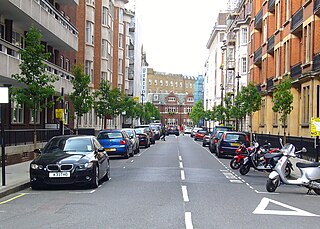
Hallam Street is a road situated in the Parish of St Marylebone and London's West End. In administrative terms it lies within the City of Westminster's Marylebone High Street Ward as well as the Harley Street Conservation Area. Formerly named both Charlotte Street and Duke Street, it was renamed in the early 1900s after Henry Hallam (1777–1859), a noted historian who had been a local resident, and his son Arthur Henry Hallam (1811–1833), poet and the subject of Tennyson's elegy In Memoriam.
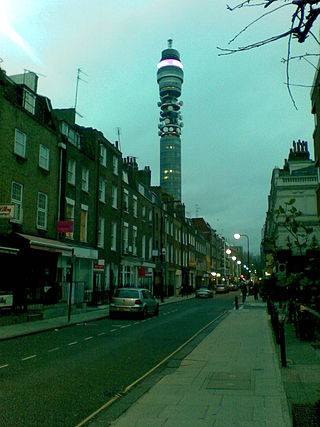
Cleveland Street in central London runs north to south from Euston Road (A501) to the junction of Mortimer Street and Goodge Street. It lies within Fitzrovia, in the W1 post code area. Cleveland Street also runs along part of the border between Bloomsbury (ward) which is located in London Borough of Camden, and West End (ward) and Marylebone High Street (ward) in the City of Westminster. In the 17th century, the way was known as the Green Lane, when the area was still rural, or Wrastling Lane, after a nearby amphitheatre for boxing and wrestling.

Percy Street is a street in the London Borough of Camden that runs from Rathbone Street in the west to Tottenham Court Road in the east. At its western end it is joined by Rathbone Place and Charlotte Street. Nearby Percy Mews is off Rathbone Place. The street was built in the 1760s and is known for the number of artists that have lived there.
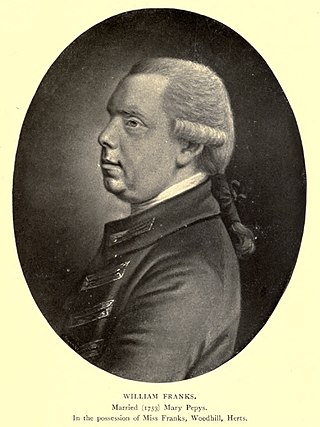
William Franks was an early English property developer who was instrumental in the development of Percy Street, Rathbone Street and Charlotte Street in central London in the area now known as Fitzrovia. He married a member of the Pepys family and built the Percy Chapel in Charlotte Street.

Goodge Place Market is an outdoor street market in Fitzrovia, in the London Borough of Camden. Licences to trade are issued by Camden London Borough Council.



















